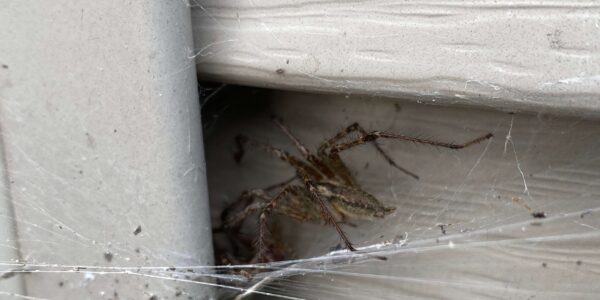Professional Spider Pest Control
Pest Defender Program for Your Home
- Three Preventative Treatments: We perform services in Spring, Summer, and Fall (every 8-12 weeks).
- General Pests Covered: Hornets, Wasps, Yellow Jackets, Carpenter Bees, House Ants, Pavement Ants, Carpenter Ants, Spiders, Stink Bugs, Boxelder Bugs and more.
- Year-Round Protection: Additional treatments are covered under the warranty.
*Wingman Pest Control will ensure your home stays pest-free all year round.
Our Michigan Spider Control Strategy
We use a three-step treatment approach for our professional spider control services in Michigan.




Step 1: Comprehensive Spider Inspection
At Wingman we perform thorough inspections to identify and address potential spider infestations and conditions conducive to their presence. Here’s a breakdown of how the inspection process works:
Exterior Inspection:
•Inspect the home’s exterior to identify any entry points or areas where spiders may take shelter (harborage areas).
•Recommend cleaning up around the foundation, repairing windows, and addressing other structural issues to eliminate access points.
•Advise on the types of outdoor lighting to use, as spiders are attracted to lights that attract insects, which in turn can invite more spiders.
Interior Inspection:
•Inspect indoor areas, focusing on damp spaces and those that are infrequently visited (such as basements, attics, or storage rooms), as these environments are ideal for spiders to thrive.
Our goal is to make recommendations for home improvements and maintenance that reduce spider habitats and entry points, helping to prevent future infestations.




Step 2: Targeted Treatment & Population Control
Treatment options include:
Residual Insecticide Application: Wingman applies industry-approved residual insecticides to cracks, crevices, and known spider harborage areas to ensure effective control.
• Dust Treatments: We utilize specialized insecticide dusts to treat voids, wall cavities, and other concealed spaces, targeting spiders in hard-to-reach areas.
• Glue Traps: Non-toxic glue traps are strategically placed to monitor spider activity and support population reduction as part of an integrated pest management approach.





Step 3: Sealing & Long-Term Prevention
Our company provides professional recommendations on mechanical control methods to help manage spider populations effectively. This includes vacuuming, web removal, and the strategic use of glue traps to reduce spider presence in and around your property.
Additionally, our wildlife inspection team is available to identify both small and larger entry points that may allow spiders, insects, or other pests to enter. These inspections focus on spotting structural vulnerabilities, such as gaps around utility lines, foundation openings, or roof penetrations, which can serve as access points for a variety of pests.
By combining mechanical control strategies with detailed property inspections and sealing solutions, we ensure a comprehensive, long-term approach to spider exclusion and pest prevention.
Why Choose Us for Spider Control?

Our technicians are trained to identify spider species, nesting areas, and entry points. We provide a detailed inspection with photos, ensuring you understand the extent of the issue and the best course of action.
We don’t just eliminate visible spiders—we target their hiding spots, disrupt their food sources, and implement strategies to keep them from coming back. Our treatments provide long-lasting results for a spider-free home.
With years of experience in Southeast Michigan, we understand the region’s most common spider infestations. From cellar spiders to wolf spiders, we know how to handle them all effectively.

FAQ'S
Got Questions? We’ve Got Answers!
Yes, spiders can indicate other pest problems since they primarily feed on insects. If you notice an increase in spiders, it may suggest a higher population of other pests, such as flies, ants, or cockroaches, providing them with a steady food source. Addressing the underlying insect issue through proper sanitation, our treatments, and exclusion methods can help reduce both the insect and spider populations in your home. We have solutions to effectively reduce these pests.
Spiders prefer quiet, undisturbed areas where they can find shelter and food, such as ceiling corners, basements, attics, garages, and storage spaces. They often hide in clutter, boxes, and rarely disturbed items, while some are drawn to moisture-rich areas like bathrooms and kitchens. Reducing clutter, sealing entry points, and keeping your home clean can help prevent spiders from settling in these spaces.
TestimonialS
Here’s what our Insect control customers say:


